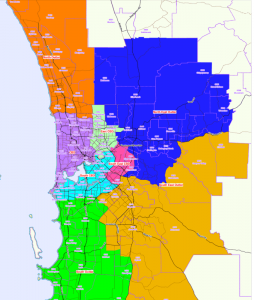FRANCHISE TERRITORIES
Franchise territories are the designated trade areas granted to a Franchisee under a Franchise Agreement. It is not compulsory to have territories but often it helps to optimise the local business opportunities or bring order to the local marketing carried out under your brand.
Models without territories are often referred to as “hunt anywhere” models or “site specific” models.
The hunt anywhere version refers to the situation where the Franchisee is not constrained by boundaries and can seek to provide the products or services anywhere. This also allows the customer choose who they want to deal with from the franchise system.
Site specific models apply mainly in the food industry where rights are granted to establish a store in a specific location or shopping centre. The Franchisee has no exclusive area other than the store and as a result there will often be several stores from the same brand with close proximity. In these situations, it may be appropriate to specify a new store will not be opened within a certain distance of existing stores. There are many permutations.
For franchise systems where territories are beneficial, the territory can operate in 2 ways:
- Full exclusivity to a specific area; or
- Partial exclusivity – such as exclusivity for inbound customer leads or marketing activity only
It is also important for the franchise to have clear rules and policies about how to deal with customers that cross multiple territories – where there may be shared or transient customers. Professional advice is recommended to work this through as this inevitably links to issues like customer marketing, referrals and income sharing between franchisees.
The boundaries of a territory should always be clearly mapped and attached to the Franchise Agreement.
TERRITORY OPTIMISATION
From a Franchisors perspective, a consideration may also be about territory optimisation. Many new franchise systems offer large territory areas and as the business grows they later find they have given away areas that are too large and have lost power to compel a Franchisee to work harder or optimise the area. If the Franchisee is happy with the results they are getting they may ease off, leaving leads not being attended to or poor customer experience.
Franchisors should do 3 things to protect against this:
- Make sure they undertake a proper quantification and mapping exercise at the start before they allocate territories so the right balance is struck;
- Consider granting smaller territories with options over neighbouring territories for the Franchisee to grow into as they prove they can optimise within agreed performance parameters; &
- Insert a clause in the Franchise Agreement to allow for sub-division of larger territories if the Franchisee does not meet performance requirements.
TERRITORY MAPPING
There is some maths & science needed to work out the size, location and boundaries of territories. Critical decisions and assumptions need to be made.
We recommend clients start with 2 key considerations:
- What works best for the end customers (to make it easier to buy from you instead of competitors); &
- What level of sales or profit do you want your Franchisees to make?
If your proposition does not work for the customer, the business fails – so get this right.
If the Franchisee needs to make a certain amount of money, reverse engineer from this point to determine the number, mix and value of customers within specific areas to achieve the sales or profit goals. This usually takes professional research and multiple attempts to test and customise.
CEO Consulting injects critical experience and guidance into this process. We also have relationships with several highly skilled mapping specialists who can work with us to develop territories & maps for a wide variety of situations. This not only gives a better commercial outcome but provides greater legal protection to Franchisors.


